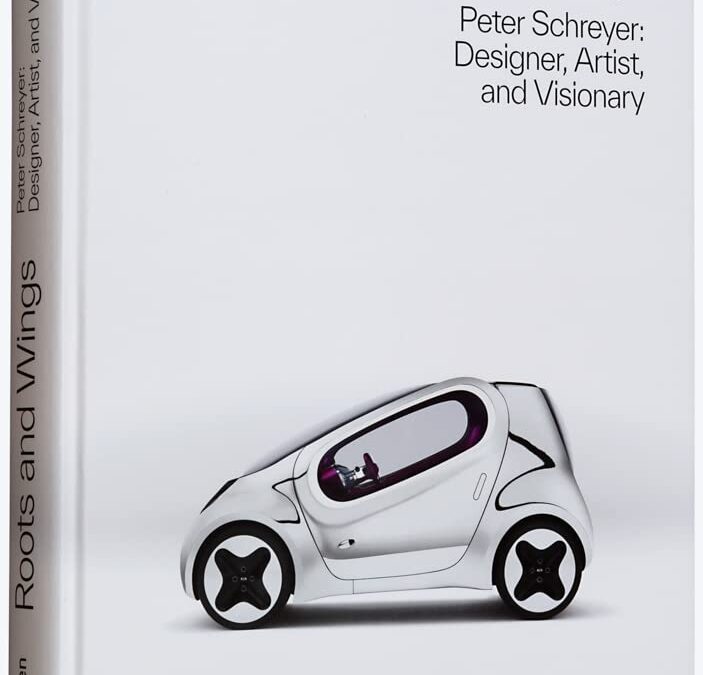
Roots and Wings explores the life and work of Peter Schreyer, one of the most influential car designers of our time. A Renaissance man with an eye for detail and foresight for innovation, he geared himself toward success. Responsible for the births of some of the 20th-century’s most iconic cars, his industry experience brought instant classics to the road. From humble beginnings in Germany’s divided south to his new base in Seoul, Schreyer embodies a conduit between the west and east―bridging his homeland’s history of automotive design with South Korea, a country that has experienced stratospheric growth on the world stage in just a few decades. Looking at the formative moments and pivotal artistic discoveries that shaped his creative mindset, Roots and Wings is the never-before-told story of how a man reimagined a car brand and left a mark on history in the process.
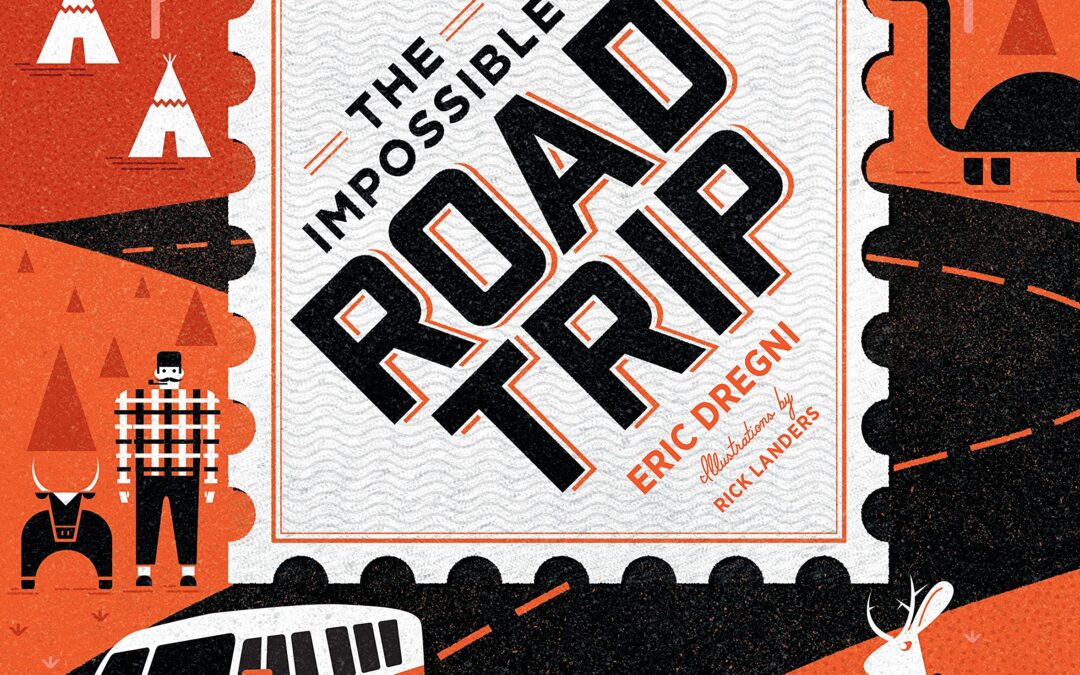
Filled with color photography, entertaining site descriptions and histories, and five unique infographic map illustrations, The Impossible Road Trip is your ultimate look back at America’s most famous—and quirkiest—roadside attractions, past and present.
The great American road trip is back. With its advantages for your health, budget, and the environment, now is the time to plan the road trip you have always dreamed of taking.
Following in the great tradition of the mid-century golden age of car travel, join the new wave of road warriors with a targeted itinerary chosen from the 150 roadside attractions explored in this colorful guide. From famous to quirky and covering all 50 states, author Eric Dregni gives you an unprecedented look at the breadth of roadside attractions in the US, illustrated in part by the photography of architectural critic and photographer John Margolies (1940–2016). Specially commissioned infographic map illustrations capture the spirit of mid-century automobile travel.
Each site depicted is accompanied by a lively and insightful history and color imagery. From autumnal New England to the gothic South, from the homey Midwest to the great expanses of the Desert Southwest, the dizzying heights of the Rocky Mountains, and the breathtaking Pacific Coast, The Impossible Road Trip encompasses it all:
- Neon-shrouded motels
- Mimetic architecture
- Tourist traps
- Roadside sculpture
- And much more
You’ll see sites both famous and esoteric, including the Cardiff Giant in Cooperstown, New York; the five-story Haines Shoe House in York, Pennsylvania; Solomon’s Castle in Florida; the world’s largest fish in Hayward, Wisconsin; one of several Paul Bunyan statues; Bob’s Big Boy in Burbank, California; and so many more.
With The Impossible Road Trip in hand, set out to discover the nation’s oft-overlooked nooks and crannies.

‘From Olive to Orange’. The collection of photos from Lucas Beaujon who travelled through western Europe for decades. Rare photos of different roles for WW2 trucks plus chapters and photos about the surplus of vehicles immediately after WW2. (the USA built 500 GMCs per day and continued to do so for some time thereafter!). Also many photos of these vehicles IN the war, Allied and German. The book has therefore historical value. 520 pages! Language: English.
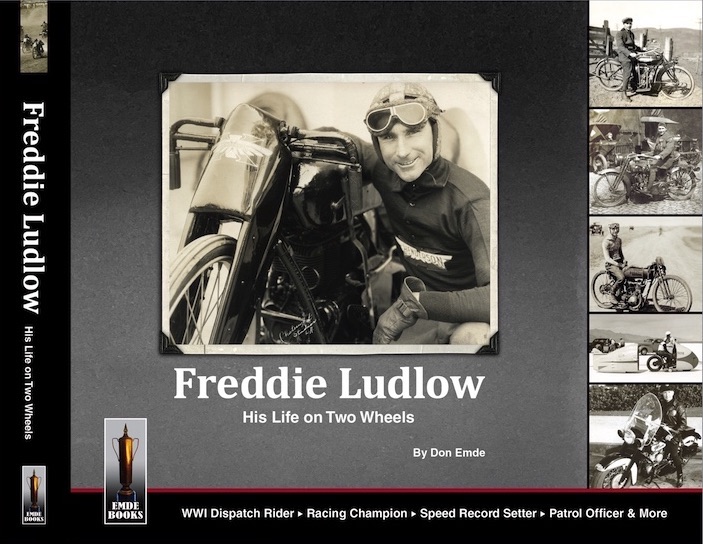
HOT OFF THE PRESS!
Freddie Ludlow. His Life on Two Wheels, by Don Emde
Back in 2020, The Speed Kings. The Rise & Fall of Motordrome Racing, by Don Emde, received the Best Book of the Year award by the Motor Press Guild. Now, you can be among the first to own a copy of his latest book, Freddie Ludlow. His Life on Two Wheels. Available now!
The seeds of the idea for this book were planted over twenty years ago when author Don Emde was entrusted with the care and ownership of a scrapbook of Freddie Ludlow, an early day motorcycle pioneer. With nearly 100 pages of the scrapbook photos organized chronologically with Ludlow’s own handwritten captions, what was obvious was that he was a man of adventure and competitive spirit, who also answered the call to serve his country.
Freddie Ludlow’s motorcycling life began as a delivery boy for Western Union on the streets of downtown Los Angeles around 1910. Local competitions followed until he enlisted in the Army and put his motorcycling experiences as a rider and mechanic to use in Europe during World War I. Upon his return home, Ludlow became one of the top motorcycle racers in the United States, rising to the level of National Champion in 1921. A few years later, his sense of service again saw him finding ways to put motorcycles to good use when he became a motor patrol officer in Pasadena, California, a job that he would have for the next thirty years.
His new “day job” didn’t mean, though, that Freddie was done raising the bar in the motorcycle sport when it came to speed and performance. Through the 1920s and ‘30s, he set numerous speed records on the hard packed sand at Daytona Beach, Florida; on the Bonneville Salt Flats, even along a stretch of public road near San Bernardino, California.
Freddie Ludlow died in 1983, but his amazing motorcycling life lives on in Freddie Ludlow. His Life on Two Wheels. It features not only his scrapbook pages but also many pages written by Don Emde filled with back stories and additional rare and historic photographs of Ludlow and many other legendary racers who were his competitors.
176 pages – Hardbound – 10 x 12 inches
Highly illustrated – 400+ photos and related images
Printed in sepia-tone throughout with retouched black & white photos from Freddie Ludlow’s scrapbook pages, plus some limited color images.

1994 was a watershed year for F1 in so many ways, the fatal accidents of Roland Ratzenberger and Ayrton Senna shook the sport to its core. What followed was mayhem. For the first time all the arguments are painstakingly examined in one book. Fresh insights, exclusive interviews, and a plethora of evidence is brought together in a story that is guaranteed to amaze and shock.
This book is a thorough examination of a turbulent season, including…
′ Rushed car changes
′ Teams unhappy with how the crisis was managed
′ A power struggle for control of the sport
′ Vague rules being exploited
′ Accusations of politically motivated penalties
′ An alleged cover-up after a horrific pit-lane fire
′ A controversial conclusion
It also saw Michael Schumacher and Benetton first emerge as championship contenders, upsetting the establishment. Many believed their sudden rise was down to cheating, whilst others felt they were scapegoated because of politics. For the first time all the arguments are painstakingly examined in one book. Fresh insights, exclusive interviews, and a plethora of evidence is brought together to give the clearest analysis yet into the above events. The book contains over 250 photos which help bring this story to life, many of which are rare and from those involved.
There are exclusive contributions from former F1 driver Mark Blundell, Benetton insiders: Willem Toet, Frank Dernie, Simon Morley (the “junior employee” blamed for the Hockenheim fire). Williams’ insiders Paul West and Richard Wise. You will be astonished at what is unearthed. 1994 was tragic, chaotic, political, technical and involved some very colorful characters at the heart of the action. It’s a story that will amaze.
′ Did Senna hear illegal traction control on Schumacher’s Benetton at Aida?
′ Concealed launch control was later found on Schumacher’s Benetton. Why?
′ Was the Hockenheim fire caused by Benetton removing their fuel filter?
′ Despite pleading guilty, why did Benetton receive no serious punishments after the fire?
′ Schumacher was banned / disqualified from a quarter of 1994 races due to various infringements. Politics or cheating?
′ Did a return to simpler cars contribute to the accidents?
The book seeks to answer these and many more questions.

A popular feature in Antique Automobile magazine, Steven Rossi’s columns open up the world of old cars, transporting readers to earlier times from the age of horseless carriages through the evolution of cars and car culture. This compilation from a decade’s writings draws on a lifetime of knowledge and experience amassed in the antique auto hobby, the enthusiast community and the automotive industry to explore topics large and small. The selected essays, edited and with photographs provided by award-winning Antique Automobile editor West Peterson, include informative treatments of historical subjects and technical matters, whimsical observations, important brand and model analyses, profiles of compelling personalities and an abundance of fascinating excursions down side roads of the automotive map. For the curious, think of this collection as a crash course in automotive history. For those already immersed in the old car universe, it offers fresh insights and an authoritative perspective on topics of lasting interest.
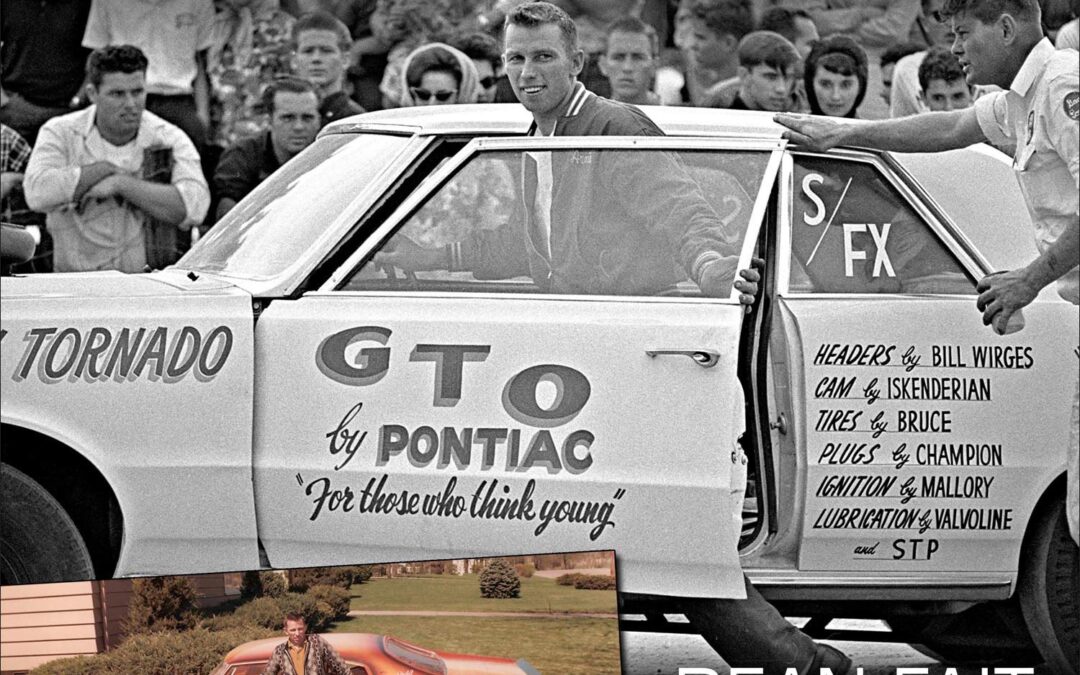
Arnie “the Farmer” Beswick was called “the consummate underdog” by Hot Rod magazine. While there was good reason, there is much more to his unbelievable career.
Born a third-generation farmer in the small town of Morrison, Illinois, Arnie Beswick’s driving career began not behind the wheel of a straight-line terror but that of a tractor. On local dusty roads, Arnie’s budding reputation grew with street cars, as the “flying farmer” was coined to describe his driving style. When drag racing began in the Midwest in the early 1950s, Arnie was one of the pioneers who campaigned Dodges and Oldsmobiles. In 1960, he purchased his first Pontiac and never looked back.
At the beginning, he didn’t like the “farmer” nickname, but he quickly learned to utilize the name to lull his competition into complacency. After all, what could a simple farmer know of the world of high-performance drag racing? Throughout the 1960s, Arnie’s Mr. B’s Passionate Poncho, Mystery Tornado, Star of the Circuit I and II, Tameless Tiger, and Super Judge all contributed to dispel the myth that a simple farmer couldn’t dominate straight-line racing.
Arnie was an innovator, fierce competitor, entertainer and showman who always gave fans their money’s worth at the track. He is still brand loyal–sticking with Pontiac long after production models ceased. Arnie has always been a fan favorite for this reason, and he continues to exhilarate fans at the track with his cast of potent Pontiacs.
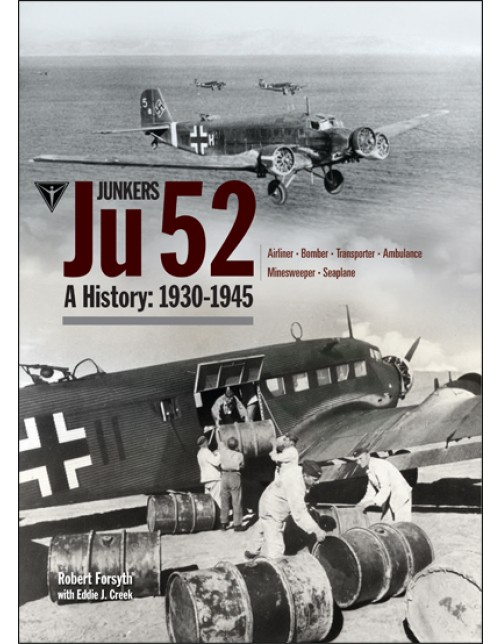
As with the other recent books in this series, this Classic study of the Ju 52 offers the most definitive account published in recent years of this bulwark of the Luftwaffe, which first saw military service in the 1930s and was then engaged in operations in the Spanish Civil War through the end of World War II.
The all-metal, three engine Ju 52/3m enjoyed a solid reputation among its crews and the troops and paratroops who used it and depended on it. It is a machine synonymous with the images of the German attacks on Holland and France in 1940 and Crete in 1941 when hundred of “Tante Jus” were used to drop paratroopers to successfully capture key tactical and strategic areas.
The full history, however, goes back much further. Built as a passenger aircraft for Deutsche Lufthansa, the Ju 52 ranges as far as South Africa, Mozambique, India and Latin America, as well being operated by several other European countries such as Belgium, Equador, Peru and Uruguay. Britain operated several Ju 52s.
The aircraft was first blooded in the Spanish Civil War, where it was pressed into service as a crude, but effective, bomber with the Legion Condor. From then on the Luftwaffe deployed it on every battle front in the West, in the Mediterranean and in the East. An example also flew in Iraq. The Ju 52 served as a stalwart transport, often operating in the most hostile conditions, with ice or dust, lifting men, animals, food, supplies, ammunition, mail, and spare parts vital for German military operations, such as the North African supply routes at Demyansk, Stalingrad and also in the Ardennes in 1944. It was also converted into the ambulance and mine-hunting roles, and was adapted as a seaplane. After the war, the Ju 52 flew on as late as the 1980s, testimony to its strength and reliability.

GIs returning after World War II created an entirely new automotive market niche when they bought surplus Jeeps and began exploring the rugged backcountry of the American West. This burgeoning market segment, which eventually became known as sport utility vehicles (SUVs), numbered about 40,000 units per year with offerings from Jeep, Scout, Toyota, and Land Rover. In 1966, Ford entered the fray with its Bronco, offering increased refinement, more power, and an innovative coil-spring front suspension. The Bronco caught on quickly and soon established a reputation as a solid backcountry performer. In Baja, the legendary accomplishments of racers such as Parnelli Jones, Rod Hall, and Bill Stroppe further cemented the bobtail’s reputation for toughness.
Ford moved upstream with the introduction of the larger Bronco for 1978, witnessing a huge increase in sales for the second-generation trucks. The Twin Traction Beam front end was introduced in the third generation, and further refinements including more aerodynamic styling, greater luxury, and more powerful fuel-injected engines came on board in the generations that followed. Through it all, the Bronco retained its reputation as a tough, versatile, and comfortable rig, both on and off the paved road. With the reintroduction of the Bronco for 2020, Ford is producing a vehicle for a whole new generation of enthusiasts that looks to bring modern styling and performance to the market while building on the 30-year heritage of the first five generations of the Bronco so dearly loved by their owners.
From the development process and details of the first trucks through the 1996 models, author Todd Zuercher shares technical details, rarely seen photos, and highlights of significant models along with the stories of those people whose lives have been intertwined with the Bronco for many years. This book will have new information for everyone and will be a must-have for longtime enthusiasts and new owners alike!
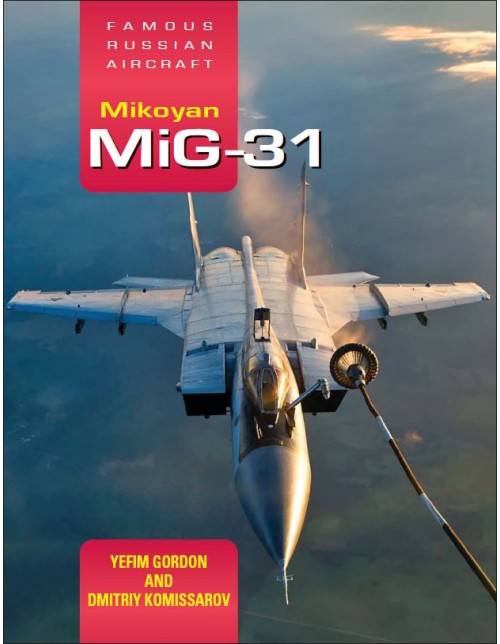
As early as 1965, when the MiG-25 interceptor was in the midst of its test program, the Mikoyan Design Bureau started work on an even more capable two-seat interceptor meant to provide adequate protection for the huge expanses of Siberia and the Soviet Far East. Though superficially resembling a MiG-25 with tandem cockpits, the aircraft was soon designated the MiG-31.
Initially dubbed Super Foxbat in the West but soon renamed Foxhound, the MiG-31 first flew on 16 September 1975 and, after a five-year trials program, achieved initial operational capability in 1980. Full-scale deliveries began in 1982 to units covering the Moscow Air Defense Zone, the Arctic and the Far East. One of the effects was that the SR-71s now stayed away from the Soviet borders.
Efforts to improve the Foxhound began right away. In-flight refueling capability was added in 1989 to overcome the problem of inadequate range. Next, the MiG-31B, featuring upgraded avionics and better weapons, entered production in 1990; existing MiG-31s were brought up to the new standard (except for IFR capability) as the MiG-31BS.
The radically improved ‘Generation 4+’ MiG-31M featuring a new WCS and new R-37 ultra-long-range AAMs first flew in 1985 but never entered production because of funding shortages. Today, the MiG-31s remains one of modern Russia’s key air defense assets, and new versions keep appearing. The book gives the complete development and service history of this remarkable aircraft and is richly illustrated with color photos and color artwork throughout.

The Boeing 737 is undoubtedly one of the best known of all passenger aircraft and has been built in greater numbers than any other commercial aircraft in the world. There are few airline passengers of the last decade who have not yet flown on one of these aircraft. More than 10,000 examples have been built in all its variants—an unbelievably high number for an airliner. This book describes the aircraft’s early development—from the first concept drawings in the early 1960s to construction, testing, and first flights—to the present, with exciting photos, drawings, and information from the Boeing company archives. From the 737-100 through to today’s 737MAX, all versions are covered in detail, including its use by many of the world’s airlines, including Air France, British Airways, Delta, Easyjet, Lufthansa, SAS, Southwest, and many others.
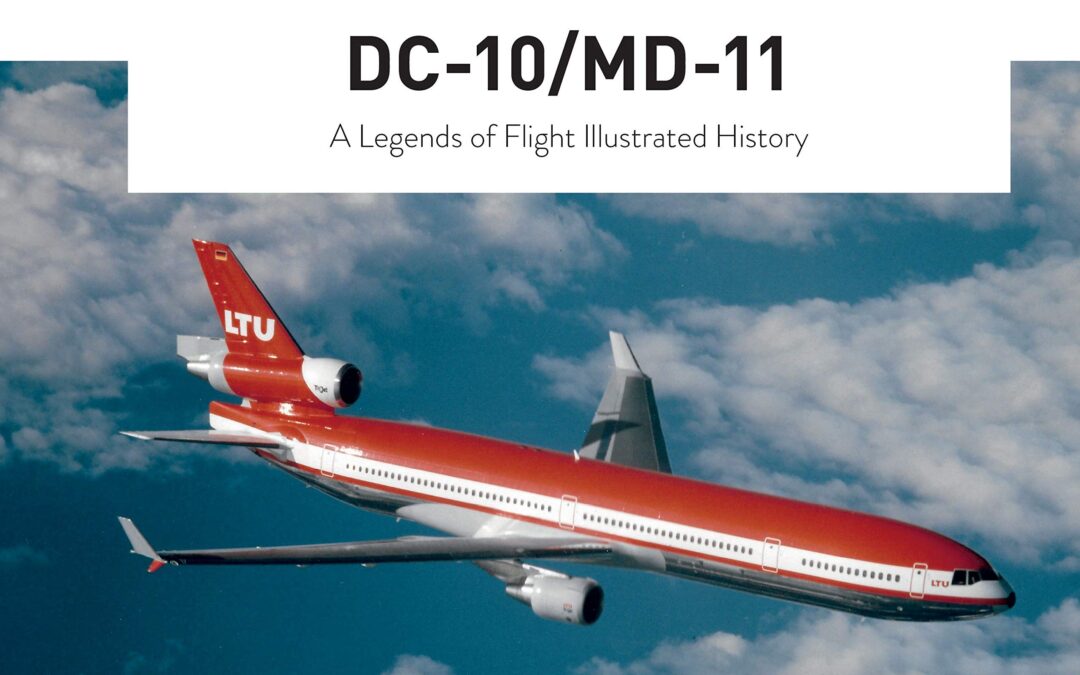
The McDonnell Douglas DC-10 three-engine jet is one of the most distinctive wide-bodied aircraft and since the early 1970s has been operated by many airlines on medium- and long-distance routes throughout the world. Successfully flying passenger service for over 40 years, the DC-10 currently still flies for FedEx in an airfreight delivery role. Filled with design and construction information, background history, technical data, and rare images, this book describes the exciting story of this aviation legend as flown by such current and past airlines as Aeroflot, American, Delta, Eastern, KLM, Lufthansa, Northwest, Pan Am, Qantas, SAS, Swissair, United, and many others. Also, the US Air Force has been flying the KC-10 Extender aerial-refueling tanker variant since the early 1980s. Coverage of the follow-on MD-11 series of aircraft is also included.
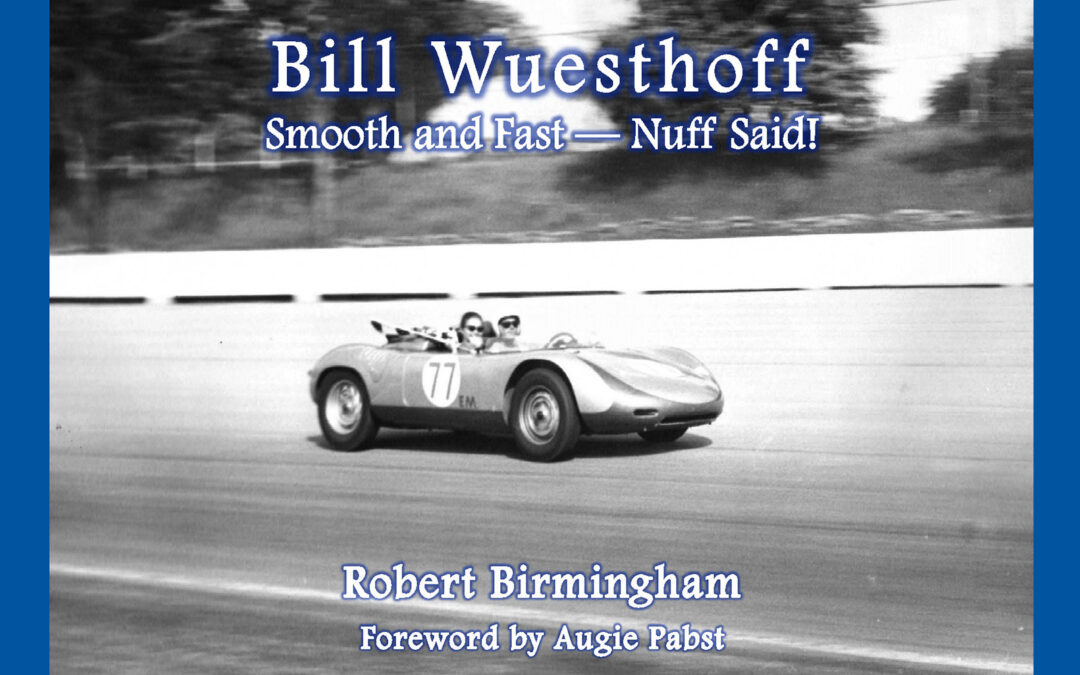
Bill Wuesthoff was among America’s best sports car racers beginning in the mid-1950s and culminating in 1964 after winning the United States Road Racing Championship, USRRC Under 2-liter title. Throughout his ten years competing, Bill kept a low profile as could be expected from someone who enjoyed the battle but shunned the spotlight.
Robert Birmingham’s personal relationship with Bill Wuesthoff dates back to 1959 and as much as anyone today, recalls Bill’s “smooth and fast” competitions from Sebring and Pensacola, Florida, Watkins Glen and Bridgehampton in the east, to Riverside, Laguna Seca, California and Continental Divide in Colorado out west and countless road-racing venues in between. Internationally, he competed at Mosport, Canada, at Nürburgring in Germany, and in Nassau for the popular yearend Speed Week series.
Bill enjoyed success co-driving with his long time close personal friend Augie Pabst, also with Harry Heuer, Chuck Dietrich, Jim Jeffords, Fred Gamble, Bruce Jennings, Frank Rand, and Joe Buzzetta, all nationally ranked competitors of that era. Team car owners included Heuer’s Meister Bräuser Scarab team, Luigi Chinetti’s North American Racing Team, Ollie Schmidt, Carl Haas, Camarodi USA, and Eddie Weschler.
A brief history of Bill’s relationship with to automobiles began at a very early age, stemming from his father who was an early Milwaukee Region SCCA member. Post-racing activities centered on automobiles, his professional business, and sons’ Karl and Lee’s ten years of highly competitive off-road racing.
Many never-before-published photographs, together with numerous documents and other race-related mementos, total over 150, along with Bill’s ten-year race history. In recent years, there has been a growing interest in the recovery of long-forgotten sports car events, tracks and of course, competitors of the 1950s and 1960s. Smooth and Fast, Nuff Said! will be a wonderful addition to any early motorsports collection.
Full color, hardcover coffee table book.

The Leading Edge summarizes the aerodynamic design and construction issues of solar cars and ultralight land vehicles. Author Goro Tamai draws on his own experience in designing solar cars at MIT to produce a book for the ground-up streamlined land-vehicle designer or constructor, as well as for the solar/electric/ultralight vehicle enthusiast. As with any engineering problem, the “best” body shape for solar cars, HPVs, or Electrathoners is not the body of absolute lowest drag. The vehicle system, in-cluding the driver, chassis, and energy/drive system must work in concert to produce the maximum output. The Leading Edge will help designers quantify the trade-offs, and make logical decisions.
Technical highlights:
- Vehicles covered include solar cars, human-powered vehicles (HPV), solar bikes, electrathon racers, ground-up hybrid or pure electric vehicles, and fuel-economy record cars.
- Numerous examples using specific race cars and teams, and how designers solved problems.
- Full definition of terms, with equations and examples provided for determining key aerodynamic parameters.
- All design and construction issues, from body shape, to wheels, to canopy integration, to solar panel sizing.
- How to do in-the-field testing and diagnosis of aerodynamic performance.
- Special overview section reviews the history of ultra-streamlined land vehicle development.

This revised and expanded third edition of VW Camper – The Inside Story updates the story across six generations of the VW Bus and includes additional information and pictures, including more conversions, as well new information about the very early years and the latest models.
Using archive and period brochure images, and photographs of original-condition models still surviving to illustrate the detailed text, it documents the various specifications, layouts, fitments and optional equipment of over forty different conversion companies, from well-known names like Devon and Westfalia, to lesser-known or unusual models such as Slumberwagen and Arcomobil. Since publication of the first edition in 2005, followed by a revised, expanded edition in 2012, VW Camper – The Inside Story has been acclaimed by enthusiasts and lovers of the VW Camper, and has become a definitive guide to the many different camping conversions built on the VW Transporter and Microbus.
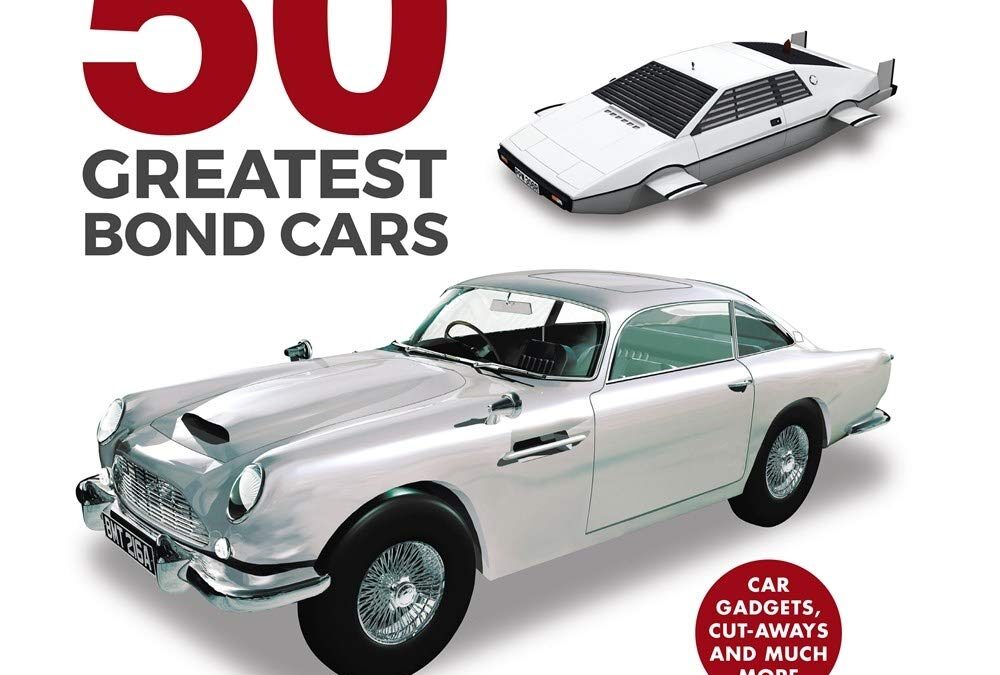
50 legendary cars from 25 movies! Includes the cars from the newest No Time to Die movie starring Daniel Craig and Rami Malek.
The perfect holiday gift for the James Bond fan in your life!
The vehicles featured in this book were driven by – or pursued – the world’s most celebrated spy. Stylish, fast, and specially equipped with state-of-the art gadgets, each is rendered in full color showing the key features that set them among the world’s greatest cars.
With facts and figures plus their key scenes and stunts, these are the cars that made Bond movie history.
The James Bond film series is one of the longest continually-running film series in history, having been in on-going production from 1962 to the present. In that time Eon Productions has produced 24 films, with the 25th – “No Time to Die” releasing November 2020. With a combined gross of over $7 billion to date, the films produced by Eon constitute the fifth-highest-grossing film series. Six actors have portrayed 007 in the series, the latest being Daniel Craig.
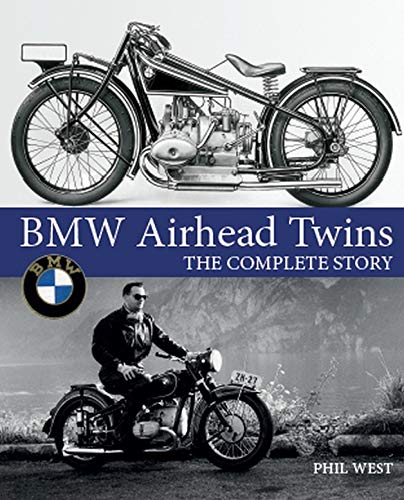
No motorcycle manufacturer is more closely associated with one type of engine than BMW: the air-cooled boxer twin or ‘airhead’. It was included in BMW’s very first motorcycle in 1923 and virtually every machine the company made, of every type, from radical road bike to TT winner, to land speed record holder, to 1970s style icon and even to the creation of an all-new adventure bike class with the R 80 G/S, right up to the mid-1990s.
BMW Airhead Twins, with over 290 photographs, includes a history of the company pre- and post-War, and the personalities behind the development of the bikes. Profiles of each of the ‘R’ bikes in turn includie detailed specification guides and production numbers. An epilogue that looks to the future of the airhead twins completes the book.

A historical tour in more than 100 images of the car as both subject and creative force in photography.
Undeniably one of the most influential innovations of the modern world, the car has changed not only the way we live, but also the way we look at the world around us. From formal, compositional device to highly desirable, photogenic object, the car has a long and enduring appeal in modern and contemporary photography as revealed in this latest addition to the V&A Photography Library.
Autofocus explores the deep cultural significance of the car in the history of photography, playing a role both as subject matter and as a genuine creative vehicle―the means by which photographers have accomplished many of their great works. Showcased is work by Henri Cartier-Bresson, Walker Evans, Robert Frank, Edward Weston, and Weegee.
This captivating album presents more than 100 photographs, alongside fascinating commentaries and an introduction, that span the early years of the automobile to the present day. For both photography and car-loving audiences, Autofocus illustrates the inexorable rise of the car as a cultural icon.
100 illustrations
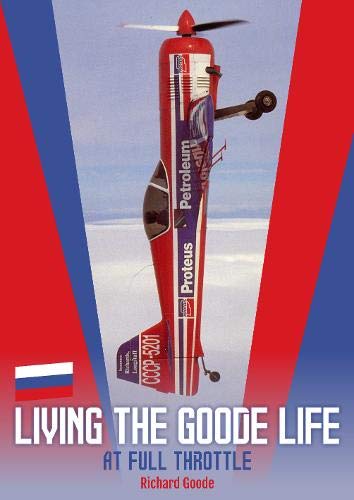
This is an extraordinary story, beginning with a bare-foot colonial childhood, and indeed not speaking English until he was four, yet ending up at Cambridge, ultimately dealing at the highest levels of the Russian aviation industry. Richard Goode’s life has been a fascinating series of activities, both social and business, dealing with an incredible range of people from the notorious Ugandan dictator, Idi Amin, to whom he was selling banknotes (legally) to a car dealer who was embroiled in the Brinks-Mat gold robbery (illegally); dealing with Russian spies at the behest of MI5; international corporate headhunting and aerobatics at the highest levels. And all this with a huge zest for living life to the full.
Highlights of his life have included:
- as a teenager, hitchhiking from London to Cape Town
- becoming one of the world’s top aerobatic pilots and making his own very successful aerobatic aircraft
- buying the first privately owned Russian aeroplane in the West and then acting as a sales agent for Sukhoi
- selling over 450 aircraft and the world’s only privately-owned Harrier jet fighter
- establishing a barely-credible business sending people from the West to fly front-line Russian jet fighters
- Totally restoring three significant English listed country houses and a run-down tea estate in Sri Lanka
- Owning a wide variety of cars from old bangers to Jaguar XKs, vintage Rolls-Royces to modern Ferraris
Throughout, his life been anything but straightforward, with a fair share of crashes and calamities. Financially, he narrowly avoided meltdown in the ruinous Lloyds insurance crash of the 1990s; he successfully faced up to the Russian Mafia and was even served with an Interpol arrest warrant! Most dramatic was the structural failure of his aerobatic plane during a public display resulting in a barely-survivable, catastrophic accident, leading to three months in a hospital bed.
We live in a very sanitised and protected world and it is refreshing to read this story about a man who has been prepared to take risks and also to accept the consequences of them, whether positive or negative. A thrilling, real-life tale.
This book is complemented by a rich selection of appealing and fascinating images.
- Jacketed Hardback, 376 page extent, 240 mm x 170 mm in portrait format
- Over 150 colour & b/w photos
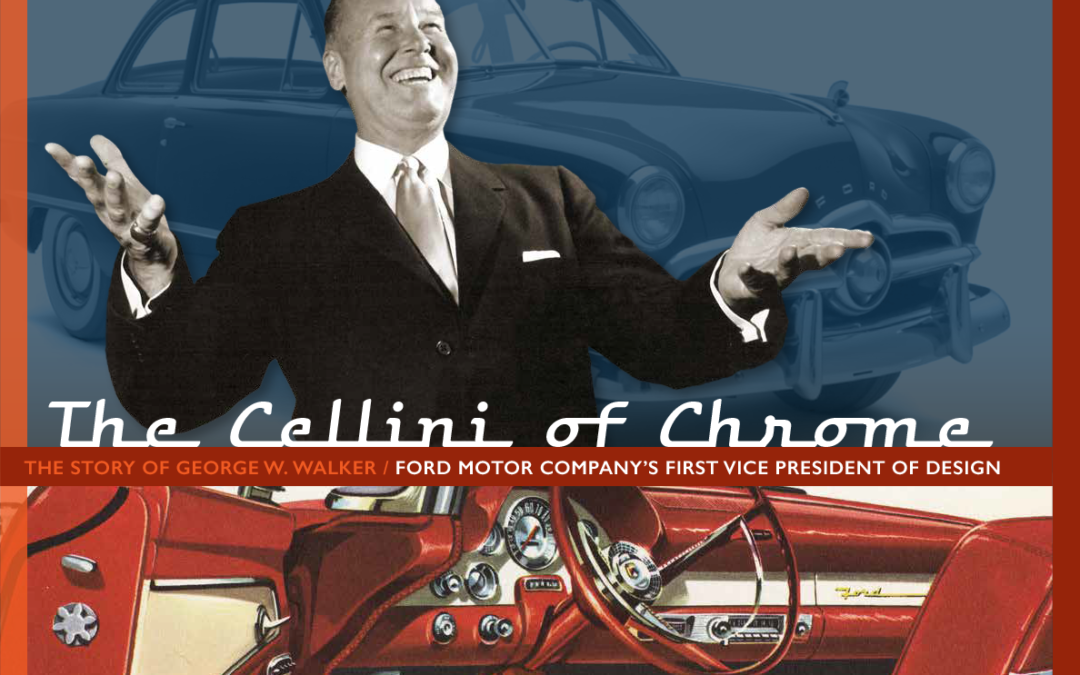
Henry Dominguez’s newest book The Cellini of Chrome, introduces the surprisingly unknown but truly fascinating career of George Walker, the Ford Company’s first full Vice President of Styling.
In the same flamboyant vein as other design greats such as Harley Earl, Gordon Buerig, Vergil Exner, Raymond Loewy and William “Bill” Mitchell, Walker developed the standard for key Ford Motor Company Products for the 1950s and ‘60’s. Beginning with the enormous success of the 1949 Ford, George became the catalyst for the iconic appearance of Ford, Mercury and Lincoln models, elevating Henry’s company to one of the all-around best-selling Automotive operations in the World.
With a personal history anything but bland, his elegant style of dress, appeal to attractive women, signature winning smile, and willingness go toe to toe with industry giants such as Henry Ford II (“The Deuce”) and other top executives, Walker made himself a key figure in the highly competitive environment of mid-20th Century automotive design.
His story is a must for any automotive enthusiast looking for an inside view of how the stylistic character of Ford products was created by Walker and his associates.






















